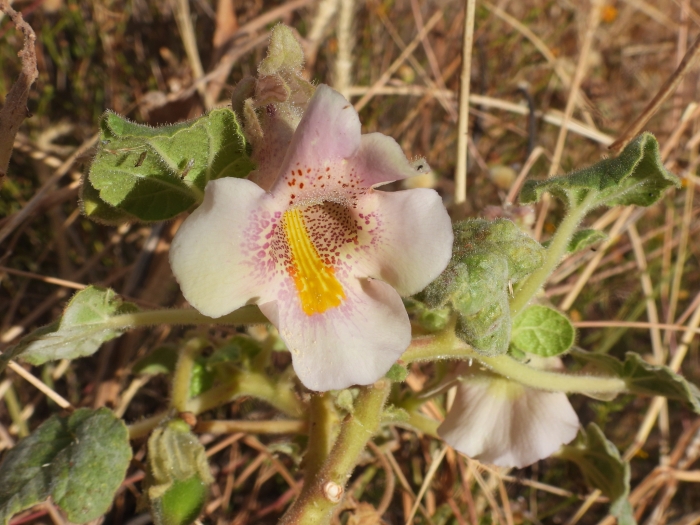Ram’s Horn
(Proboscidea louisianica)
Ram’s Horn (Proboscidea louisianica)
/
/

bobnieman
CC BY 4.0


















































Estimated Native Range
Summary
Ram’s Horn is valued for its unique appearance and fragrant foliage. It is often grown as an ornamental in xeriscapes and desert gardens due to its drought tolerance and interesting fruit. It requires minimal water once established, thrives in well-drained soils, and prefers full sun exposure. While it is not a common garden plant, it can be used in educational settings to demonstrate adaptations to arid environments. However, gardeners should be cautious as Proboscidea louisianica can become invasive outside its native range. It is also important to note that the plant rarely self-pollinates, relying on pollinators to produce its numerous fruits.CC BY-SA 4.0
Plant Description
- Plant Type: Herb
- Height: 1-2 feet
- Width: 2-3 feet
- Growth Rate: Moderate
- Flower Color: Pink, Yellow
- Flowering Season: Summer
- Leaf Retention:
Growth Requirements
- Sun: Full Sun
- Water: Low
- Drainage: Fast
Common Uses
Edible*Disclaimer: Easyscape's listed plant edibility is for informational use. Always verify the safety and proper identification of any plant before consumption., Low Maintenance, Showy Flowers
Natural Habitat
Native to arid and semi-arid regions, including deserts, grasslands, and scrublands of the Southwestern and South Central USA, as well as Northern Mexico
Other Names
Common Names: Goat’s-Head , Purple-Flower Devil’s-Claw , Aphid Trap , Louisiana Unicorn-Plant , Elephant Tusks , Unicorn-Plant , Aphid Trap , Common Devilsclaw , Devil’s Claw , Bockhorn
Scientific Names: Proboscidea louisianica , Proboscidea louisiana , Proboscidea louisiana subsp. louisiana , Martynia louisiana , Proboscidea jussieui
GBIF Accepted Name: Proboscidea louisianica (Mill.) Thell.